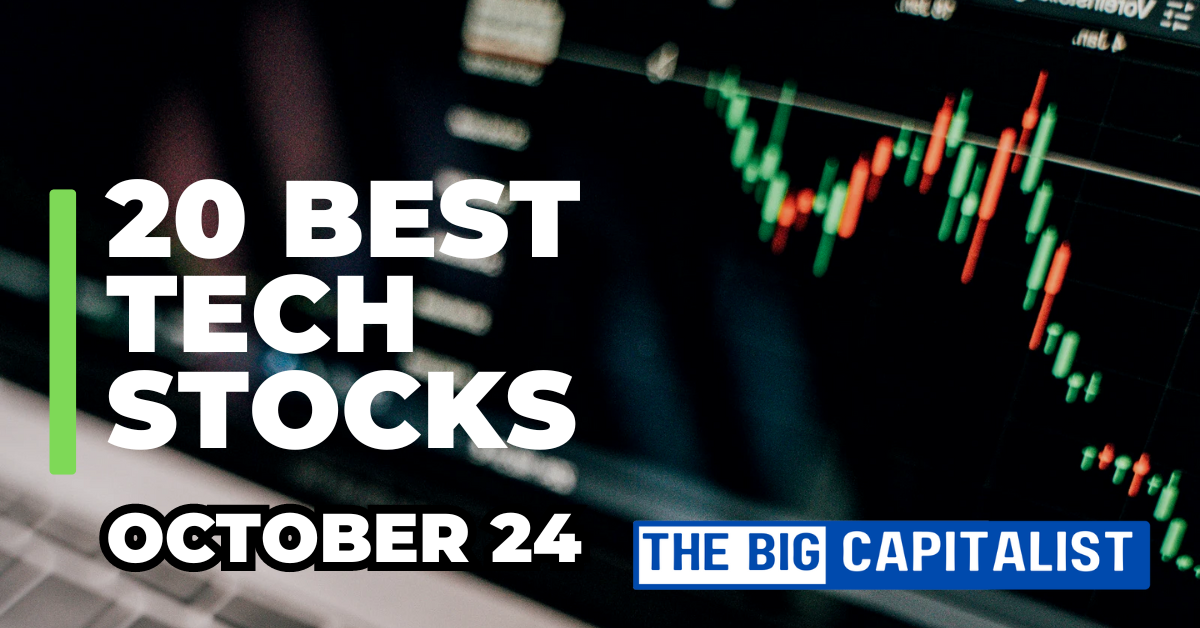The future of transportation is unfolding before our eyes, yet it remains tantalizingly elusive. Self-driving cars have captured public imagination and investor interest, yet many skeptics remain wary of the promises made by tech enthusiasts in Silicon Valley. After all, how many times have we been told that autonomous vehicles are just five years away from becoming a reality? As we sift through the buzzwords and ambitious timelines, one fact stands out: self-driving technology is an industry that is maturing rapidly and presents unique investment opportunities.
Luke Lango, a notable voice in this space, has remained bullish on the autonomous vehicle market, pointing to various advancements and trends that signal significant potential. But with different approaches to self-driving technology emerging, it’s crucial for potential investors to understand these two primary types of self-driving tech that are shaping the future of mobility and their implications for the investment world.
The Two Types of Self-Driving Technology
As the self-driving vehicle sector bifurcates, it can be broadly categorized into two distinct approaches: Level 2 Automation (Partial Automation) and Level 5 Automation (Full Automation). These stages represent varying degrees of autonomy, control, and technological capability, and have different implications for manufacturers, consumers, and investors.
Level 2 Automation: The Semi-Autonomous Frontier
Level 2 Automation, often referred to as semi-autonomous driving, is characterized by systems that can handle specific driving tasks under certain conditions. This includes advanced driver-assistance systems (ADAS) like Tesla’s Autopilot, GM’s Super Cruise, and Ford’s BlueCruise. Each of these systems allows for features such as adaptive cruise control, lane centering, and traffic jam assist.
| Stock | Symbol | Price | Chart (24H) |
|---|---|---|---|
Tesla, Inc. TSLA | TSLA | $241.37 | |
 General Motors Company GM | GM | $44.57 | |
 Ford Motor Company F | F | $9.63 |
While these technologies provide drivers with added convenience and safety, human intervention is still a requirement. Drivers must remain attentive and are responsible for the safe operation of the vehicle. This represents a critical point for investors: Level 2 automation is already being utilized and accepted in the market, allowing companies like Tesla to generate revenue from these systems while moving towards more advanced capabilities.
Investment Takeaway: Companies that excel in Level 2 technologies are already capitalizing on market traction. Investors might consider focusing investments on established auto manufacturers and tech companies developing robust ADAS systems, as they represent revenue streams in the near term while playing a role in the future development of fully autonomous vehicles.
Level 5 Automation: The Holy Grail
On the other end of the spectrum lies Level 5 Automation, often considered the ultimate goal of self-driving technology. Vehicles at this level would operate entirely independently in any environment without human intervention. Level 5 cars would not even require a steering wheel or pedals, providing total freedom for occupants while the vehicle navigates urban streets, highways, and rural roads.
Achieving this level of autonomy entails overcoming numerous hurdles, including legal regulations, insurance liability, infrastructure changes, and technological advancements in artificial intelligence (AI) and machine learning. Companies like Waymo and Cruise are leading the charge in developing fully autonomous systems that aim for Level 5 capabilities. The competition is fierce, and while significant strides have been made, the pathway to full autonomy remains fraught with challenges.
Investment Takeaway: Investing in startups that focus on Level 5 technology carries significant risk but also the potential for substantial rewards. Look for companies that are not just innovating in AI and machine learning but also actively engaged in partnerships with municipalities and regulatory agencies to pave the way for a future where fully autonomous vehicles can roam freely.
The Road Ahead: Merging Perspectives
Navigating the self-driving sector requires astute awareness of trends, challenges, and public sentiment. As we assess the growth of both Level 2 and Level 5 technologies, understanding how these approaches complement one another becomes vital.
The evolution from Level 2 automation to Level 5 will involve interoperability between existing infrastructures, legislation, and consumer acceptance of self-driving technology. It is essential for manufacturers to ensure that their Level 2 systems continually improve to build a solid foundation for autonomous driving technology. Each successful deployment of semi-autonomous features can serve to educate consumers, develop trust, and ultimately push the autonomy envelope further.
From an investment standpoint, watching how companies transition their R&D investments from Level 2 to Level 5 can provide insights into long-term strategic positioning. Companies capable of navigating this shift successfully could command significant market advantages, attracting both consumers and investors alike.
The Investor’s Perspective on Financial Opportunities
The self-driving industry presents a promising yet complex landscape for investors. The trends involve more than just technological advancement; they encompass regulatory and consumer acceptance factors that influence market viability.
Key Financial Indicators:
- Partnerships and Collaborations: Successful companies often benefit from strategic alliances with technology firms, municipalities, and other stakeholders. Monitoring partnership announcements can help investors gauge which companies are positioning themselves favorably in the autonomy race.
- Market Adaptation and Regulatory Navigation: Keeping abreast of regulatory developments related to self-driving cars can provide investors insights into the operational capabilities of companies. Supportive legislation could propel market growth significantly.
- Consumer Sentiment: Understanding consumer perspectives can inform investment decisions. Companies investing in consumer education and marketing can influence acceptance levels, thereby creating more lucrative market conditions.
- Technological Milestones: Watching for updates about technological breakthroughs in AI and machine learning, as well as successful testing of autonomous capabilities, provides a roadmap of which companies may lead the charge in market developments.
Practical Advice: Capitalizing on Autonomous Investing
For those interested in capitalizing on the self-driving technology boom, consider implementing the following strategies:
- Focus on Established Players: Seek investments in well-recognized automotive manufacturers that have reputable track records in developing semi-autonomous features, which present lower risks with immediate revenue generation.
- Keep an Eye on Startups: Consider diversifying investments into startups that focus on Level 5 technologies. Although they come with higher risks, they also offer the potential for exponential growth once successful products hit the market.
- Research and Engage: Stay informed about news within the self-driving community, attend virtual conferences, follow industry publications, and monitor investment trends related to autonomous vehicles. Engaging with experts and utilizing a comprehensive trading guide can yield actionable insights.
- Utilize the Best Trading Platforms: Leveraging the best trading platform for beginners can help you navigate the investment process efficiently. These platforms often provide educational resources and tools tailored for those new to investing.
- Watch for Breakthroughs: Pay attention to technological advancements made by companies testing their self-driving vehicles on public roads. These breakthroughs are pivotal indicators of progress and can inform timely investment decisions.
The Future is Coming
The future of self-driving technology will undoubtedly bring significant changes to our transportation ecosystem. While skepticism about timelines remains, the reality is that both Level 2 and Level 5 automation are critical areas of focus for investors seeking to navigate this promising yet intricate industry.
Investment opportunities in self-driving cars have never been more pronounced. As advancements continue to unfold, investors with a keen eye can find strategic plays within both frameworks of technology. Understanding shifts in consumer acceptance, regulatory approvals, and market adaptation will help investors make informed decisions.
In closing, whether you opt for the stability of Level 2 automation investments or the high-risk, high-reward world of Level 5 technology, staying knowledgeable and engaged will be your best strategy in this evolving landscape. As we approach a future where self-driving vehicles are not just a dream but a reality, preparedness and insight will pave your way into the next chapter of mobility.
-
A Beginner’s Guide to Understanding Blockchain Technology
Blockchain technology is one of the most talked-about innovations of the 21st century. From cryptocurrencies like Bitcoin to supply chain management and digital identity, blockchain is revolutionizing industries worldwide. But what exactly is blockchain, and why is it so important? If you’re new to understanding blockchain technology, this guide will help you understand the basics,…
-
Top 3 Long-Term Investment Strategies for Bitcoin Holders
Bitcoin has captured the world’s attention as a revolutionary digital asset. Since its inception in 2009, it has evolved from an obscure experiment into a global phenomenon, often described as “digital gold.” Its meteoric price rises and sharp corrections have made headlines, drawing in both seasoned investors and curious newcomers. Understanding effective strategies for Bitcoin…

















